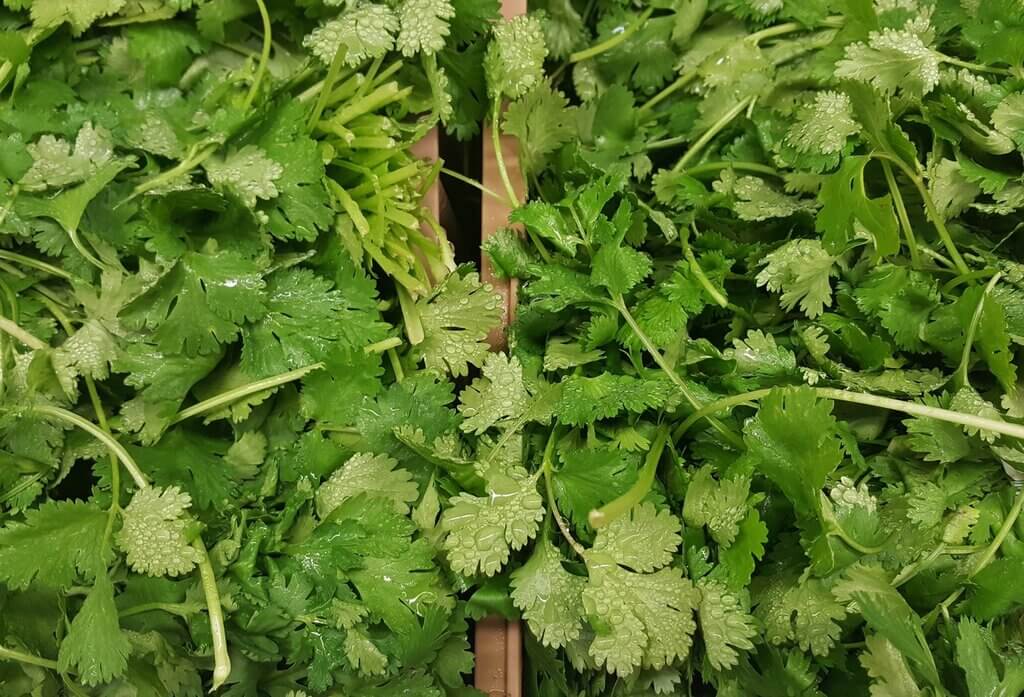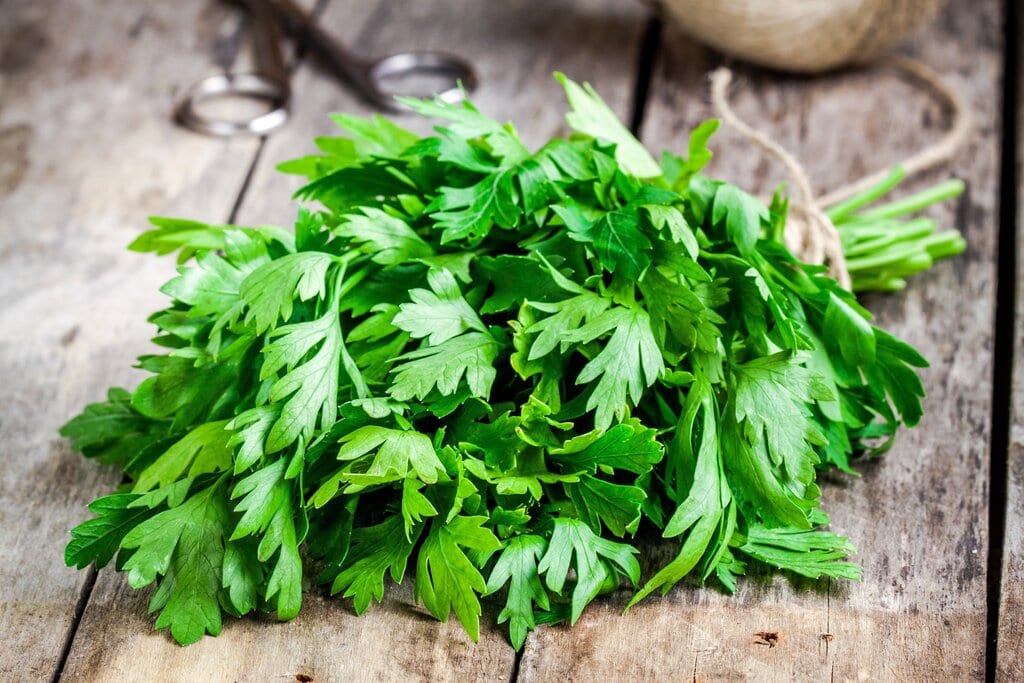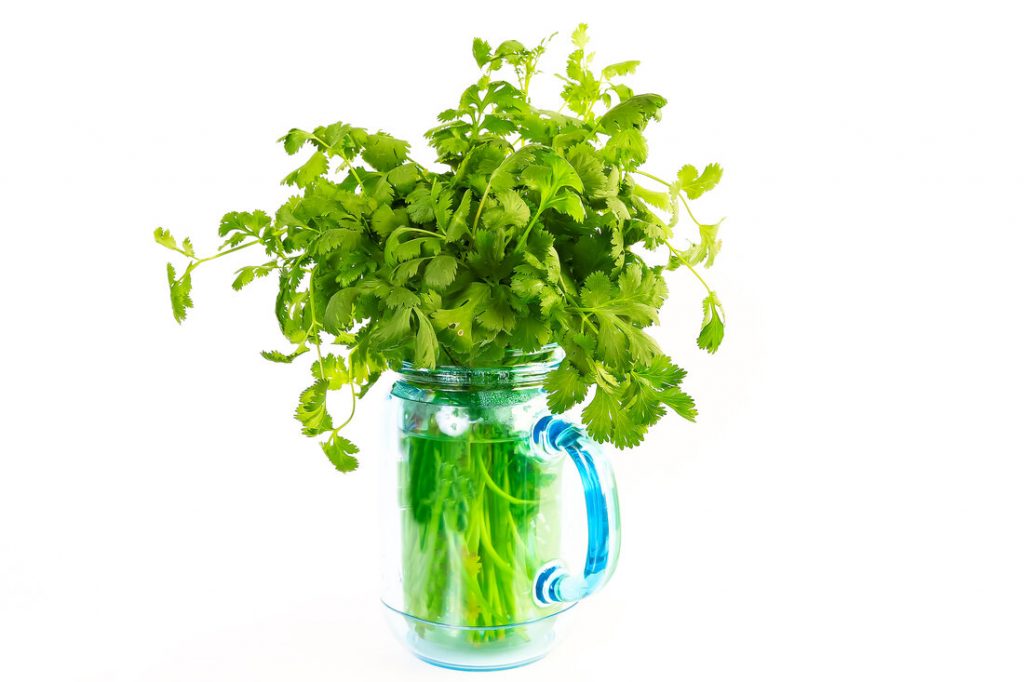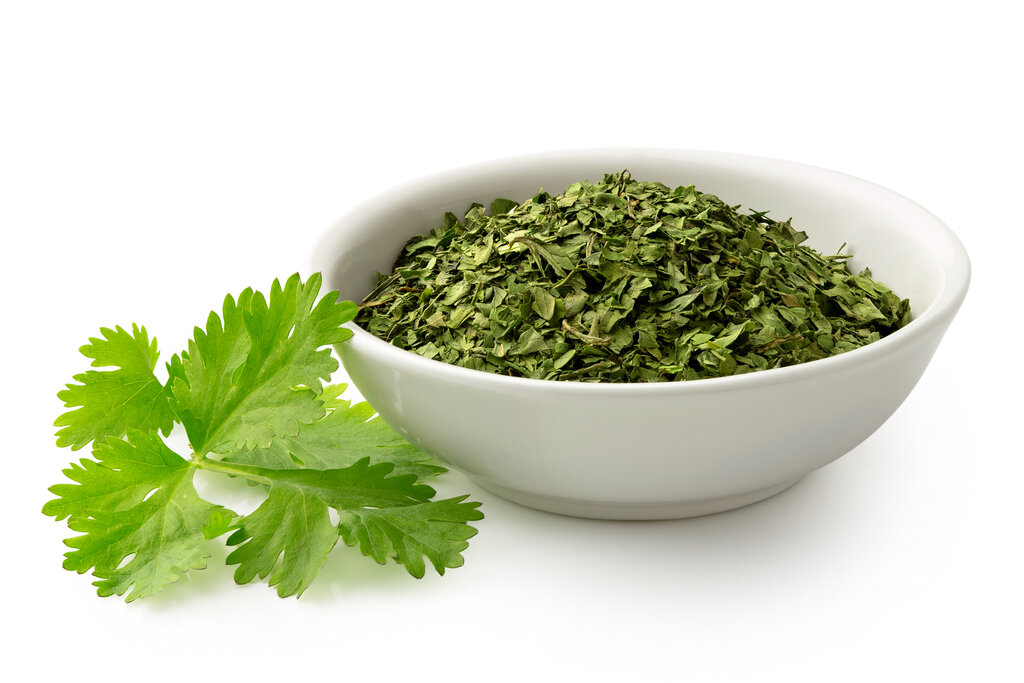
Staring at the sad and slimy bundle of cilantro fresh out of the fridge, you wonder what went wrong when you only bought it a few days before. Now, you need to do a quick grocery run just to grab livelier ones for your latest specialty. Wiser and hopeful, you’re now looking for answers to how to store cilantro so you can keep it fresh and ready for cooking.
With this guide, you’ll not only discover how to keep cilantro fresh for longer but also learn to dry cilantro for storage. If you’ve already mastered the ways of storing your parsley, then this will be a piece of cake!
What Is Cilantro?

Commonly used for Mexican recipes and Asian cuisine, cilantro is the leaves of the coriander plant or Coriandrum sativum. The bright color of the green herb reflects its bright and zesty flavors, perfect for any dish even with just a little amount. Some also describe its taste as slightly soapy with a hint of peppery notes.
The key to having fresh cilantro starts at choosing the best-looking bundle at the produce section. A quick whiff on it will let you know it’s the right one. Its scent should be almost-soapy and lemony. Plus, the stems should be firm and the leaves should have no discoloration, and only have a boasting green color.
Parsley vs. Cilantro

At a glance, cilantro and parsley may look the same. But if you study them long enough, you’ll discover that cilantro has curvier leaves than the pointy parsley. You’ll also learn that the former has thin stalks while the latter has thick ones.
When it comes to flavors, parsley lends mild, fresh, and peppery hints to soups and sauces. Meanwhile, cilantro gives a pungent taste to salad, tacos, and sauces. Nonetheless, both of these herbs will elevate your dish with just a little amount.
READ ALSO: Parsley vs Cilantro: 4 Main Differences You Should Know
How to Store Cilantro to Keep It Fresh

Now, let’s learn how to store cilantro in the fridge for the best-looking crisp herbs. This process helps this flavorful ingredient last from two weeks to a month with just a few easy steps. So without further ado, let’s dive right in!
- Remove the rubber band from the cilantro. The tightness of the bands could cause damage to your cilantro. So, take them off and save the herbs from perishing quickly and breaking off to pieces.
- Using kitchen scissors or a knife, cut off one to two inches from the bottom. This removes the dead tissues which can’t absorb the water.
- Pat the cilantro dry using a paper towel. Excess moisture on the leaves leads to mold growth which causes quick decay.
- Fill the herb saver or canning jar with 2 to 3 inches of water, then place the cilantro in it. The herb doesn’t have to be fully submerged. Insert the bundle, stem first, just like how you would put flowers in a vase.
- Loosely cover the leaves with a plastic bag and use a rubber band to close it. Check if the bag covers all the leaves and the mouth of the jar to prevent air from coming in and drying out the cilantro.
- Place it in the refrigerator. These herbs love and flourish in a cold temperature.
- Replace the water every few days. If there’s already discoloration on the water then it’s time to replace it with a fresh one.
- Wash the cilantro before using it! Since we didn’t wash the herb before storing it, be sure to rinse off any dirt before incorporating it into your dishes. When the cilantro gives off an unpleasant smell and its leaves have turned dark then it’s time to throw them out.
How to Preserve Cilantro
How to Freeze Cilantro
Can you freeze cilantro? Of course, you can! One way to help this herb last for up to six months is freezing it solid. And here’s how you can easily do it:
- Wash the cilantro and pat the leaves dry.
- Blend the cilantro leaves and some of the stalks into pieces in a food processor.
- Place one tablespoon of chopped cilantro in ice cube trays then fill the remaining space with water or olive oil.
- Store in a resealable plastic bag once frozen.
And if you want to use it, just toss in a cube of frozen cilantro in stews, soups, or sauces!
How to Dry Cilantro

Another way of preserving this herb is by drying it out. Even though dried cilantro doesn’t have as much flavor as the fresh ones, it lasts for up to a year! But before using it, remember to taste it first. This is to know if the flavor is still the same. Here’s how you can make a dried version:
- Preheat the oven to 250 to 300 degrees F. Using a baking spray, lightly coat a baking spray.
- Wash cilantro and pat the leaves dry.
- Cut the leaves and spread them in a single layer on the prepared baking spray.
- Dry in the oven for 20 to 30 minutes until they lose the fresh green color.
- Once cool, remove from the baking sheet using a spatula and store in an airtight container.
Is Cilantro Good for You?
Cilantro is rich in antioxidants and nutrients such as Vitamin C, A, and B2. What’s more, according to a study on animals, this herb has natural sedative properties that help reduce symptoms of anxiety and improve sleep activity.
Cilantro Recipes to Try

Cilantro is not for everyone. Most people have a love-hate relationship with this herb as too much of it adds strong soapy and bitter flavors. But with the right amount, it can work magic in your dishes. Now, if you’re looking for recipes that make fresh cilantro a star, then continue reading on.
- Pico de Gallo – Enjoy a fiesta of Mexican flavors with this pico de gallo. This flavorful mix adds refreshing hints using tomatoes, jalapenos, and lime.
- Cilantro Lime Rice – Savor deliciously tangy bites with this 20-minute Instant Pot rice! This side dish is brimming with bright and zesty hints of cilantro and lime juice.
- Cilantro Sauce – A popular Middle Eastern condiment, this spicy cilantro sauce levels up your favorite dish with the combination of earthy spices and jalapenos.
- Cilantro Pesto – Instead of nuts and basil, this pesto sauce recipe combines cilantro and hemp seeds for a creamy and rich mix. It also only takes 10 minutes to make.
Store Depending on Your Needs
If you have time to spare, try these different storing methods for fresh, frozen, and dried herbs. Now with just a few easy steps, the hours’ lifespan of your cilantro can last from two weeks up to one year!











